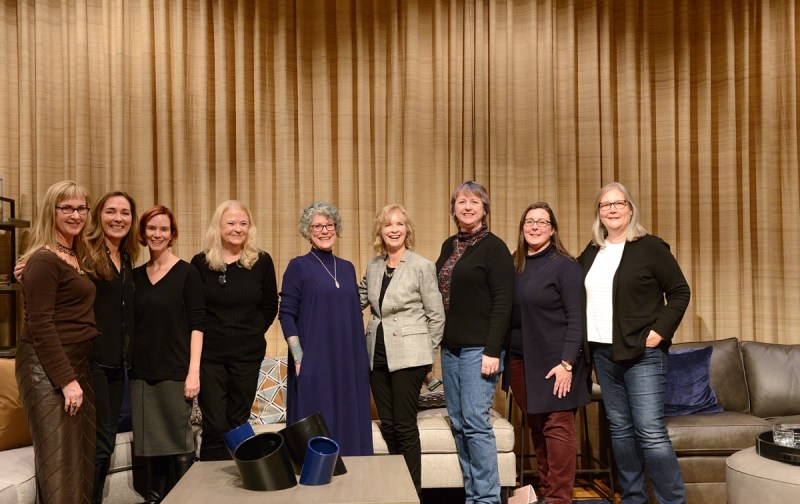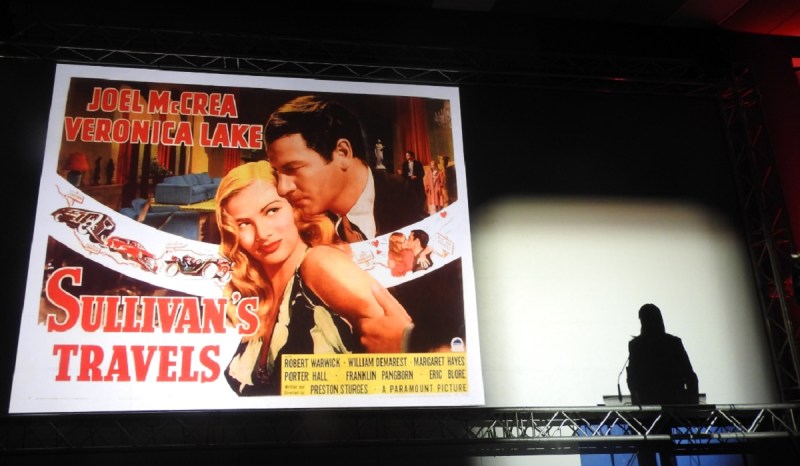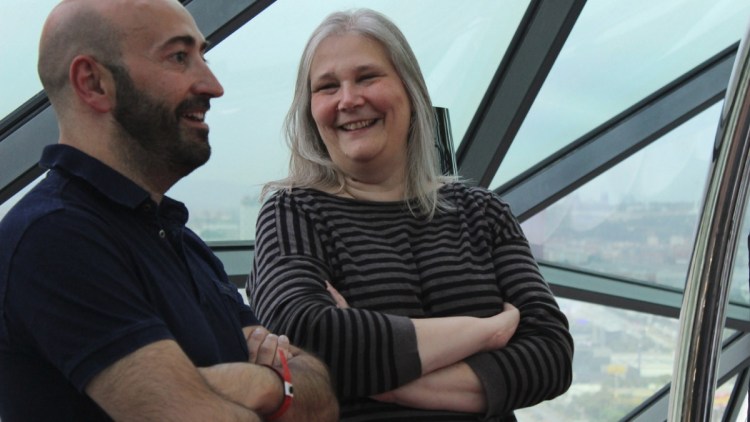Amy Hennig is captivating, both as a speaker and a writer/director of video games. That’s why she’ll be receiving the prestigious lifetime achievement awards at the annual Game Developers Choice Awards (GDCA) 2019 coming in March.
Her games are among my favorites of all time, and I can say the same about her speeches. I’ve heard Hennig speak multiple times, including at a dinner in Montreal a few years back. It was always interesting to hear her talk about what inspired her to create some of the most memorable video game characters and stories, where, after you’ve finished playing for many hours, you feel like you’ve come to be old friends with the characters and the environments that shaped them.
Perhaps her big accomplishment, at least on Sony’s game consoles, is making the world safe for single-player video games.
A long career

Above: Amy Hennig.
Hennig, 54, is a digital artist, animator, game designer and writer/director. She worked on Blood Omen: Legacy of Kain and Legacy of Kain: Soul Reaver at Crystal Dynamics, among other titles. She jointed Naughty Dog and contributed to Jak & Daxter.
But she is most known for her critically acclaimed work on the Uncharted franchise with Naughty Dog.
Previous recipients of the lifetime achievement award include Tim Schafer, Tim Sweeney, Shigeru Miyamoto, Warren Spector, John Carmack, Hironobu Sakaguchi, Hideo Kojima, Sid Meier, Ken Kutaragi, Ray Muzyka and Greg Zeschuk, and Peter Molyneux.
The Game Developers Choice Awards ceremony takes place on Wednesday, March 20, 2019 at 6:30 p.m. at the San Francisco Moscone Center during the Game Developers Conference 2019. The ceremonies are available to attend for all GDC 2019 pass-holders.
The start of inspiration

Above: Women in Games exhibit speakers at The Strong Museum: (left to right) Megan Gaiser, Bonnie Ross, Jen MacClean, Dona Bailey, Brenda Laurel, Susan Jaekel, Sheri Graner Ray, Victoria Van Voorhis, and Amy Hennig.
She was humble about how she got started in games during a talk at Gamelab in Barcelona this year.
“Like most people at the time, I stumbled into it. There was no path I was following. I always loved games. I was one of the kids — this is in the ‘70s — and it was pretty sad, but I would spend all my money at the arcade,” she said, speaking with her friend Mark Cerny. “There wasn’t much to play back then. There was Pong, Night Driver, and my favorite game, Sea Wolf, because there was a periscope you could look through. Like a lot of people my age, I also discovered the Atari 2600, Dungeons and Dragons, Star Wars. These things all collided to shape the kind of person that I am. But I never considered it a career.”
She also said recently that she tracked her original creative inspiration to 1977, when she was 12, and she was inspired by films like Star Wars, the Atari 2600 game console, and the Dungeons & Dragons role-playing game. Such inspirations were “burned into my retinas,” she said.
Hennig started at Atari, working on the Atari 7800. She came into her own in the past decade as a writer and director of acclaimed adventure titles with strong narrative and character elements. And that work helped give Sony a critical advantage in the battle of the video game platforms.
Inspiration for Uncharted

Above: Amy Hennig used references to Sullivan’s Travels in the Uncharted series.
Hennig was the creative director and writer of Naughty Dog’s Uncharted series, starting with Uncharted: Drake’s Fortune, and continuing with Uncharted 2: Among Thieves, which started with an unforgettable scene of hero Nathan Drake hanging onto a train that was dangling over a cliff.
She also wrote and directed Uncharted 3: Drake’s Deception, and began work on Uncharted 4: A Thief’s End. But she left before that work was done in 2014. In the spring of 2014, she joined Visceral Games to work on a new Star Wars game. But that didn’t turn out well, as EA canceled the game and shut the studio. Hennig left EA earlier this year, and she is reportedly working on something new.
In Montreal in 2015, she talked about the Uncharted series as a “love letter to the classic pulp adventure genre.” The aim was to recapture the fun, charm, adventure, and romance of the genre of movies, books, and comics. They drew from a lot of sources.
One of the obscure ones was a 1942 film Sullivan’s Travels. It’s about a Hollywood director who is fed up with churning out lightweight comedies and yearns to make a socially relevant film about the sorrows of humanity. It’s no coincidence that Victor Sullivan, one of the key figures in the Uncharted series, shares a last name with John Sullivan from the old film. Preston Sturges, director of the film and its writer, wrote the story as a plea for fellow movie makers to “not to abandon the fun in favor of the message.” He was saying the directors were getting a little too “deep dish and they ought to leave the preaching to the preachers,” Hennig said.
Sullivan has one comic misadventure after another. Then the film takes a dark turn. Bit by bit, Sullivan loses everything, except his ability to laugh. He realizes his greatest gift as a film maker is to make people laugh. The film was criticized as a comedy that got too serious and as a tragedy that was too funny.
“This is the subversive thing about Sturges’ movie,” Hennig said. “He made a message film arguing about message films.” The film had a message embedded in a story with escapist fun.
Hennig said that games are being criticized in a similar way.
“There is so much dogma about what games should and should not be,” Hennig said. “And we want so badly to be taken seriously, my fear is that in the face of this criticism, we start to take ourselves too seriously, and will abandon the fun in favor of the message. And forget that above all, our goal is to entertain. That is why Sullivan’s Travels is an important touchstone for me. It’s a reminder that there is nothing wrong with escapist fun. It’s OK to just entertain. In fact, maybe that ought to be our primary goal. Our games have the power to transport people out of their daily lives. So even in the midst of all the gunslinging and two-fisted combat, stunts, and spectacle, we can still tell a story about beauty, despair, compassion, fear, loss, regret, and grace, with a little sex in it.”
Creative experience

Above: Mark Cerny, Amy Hennig and Geoff Keighley at Gamelab.
As for the hardship of getting games canceled, Hennig said in a talk in Barcelona this year, “At the same time I was doing pixel art on this Atari game, and then I got the job at EA doing the same thing on Bard’s Tale IV, which also didn’t get published. It was a great humbling lesson to work on two games that didn’t get published right out of the gate. But I could see that there was more. I could connect the dots. We were going to be doing more complex stuff.”
And Hennig got to see how deep the rabbit hole goes in her future games, when it comes to story.
She described her role as creative director in later years as akin to a parent. You shouldn’t try to hold an art director’s pencil, she said.

